In the fast-progressing industrial landscapes of current times, it is essential to maintain strong and effective network connectivity. Ethernet switching devices, explained below, have emerged to be critical components in ensuring communication between complicated systems without interruptions. This device should work in extreme conditions, such as atypical temperatures, strong shock, and electromagnetic waves. This detailed article presents the perspective of Industrial Ethernet Switches and its essay writers, who will discuss the design, purpose, and areas of use. At the end of this article, system users will appreciate how to utilize these switches to improve the efficiency of operations and the system’s dependability on the industrial environment.

Industrial Ethernet switches are technological devices equipped for interconnecting electronics with network functionality, widely utilized within industrial setups for data transfer. The primary purpose of these switches is to manage and control the amount of data traffic on the network so that data packets are sent to their targets as effectively as possible. Generally, industrial Ethernet switches have enhanced durability, allowing them to withstand harsh conditions, and features that support more sophisticated network protocols improve communication efficiency. These switches also improve the system’s internal stability and operational time by helping to balance the distribution of traffic on the network, making it possible to use the industrial Ethernet solution in demanding environments.
An industrial Ethernet switch functions by employing the networking protocols of the data link layer to manage traffic seamlessly between connected devices. Switches are used to sort and dispense the data packets with the help of packet filtering apparatus and packet prioritization techniques, which increase communication speed and efficiency. There are further features worth attention, such as quality of service (QoS) resources and layer three routing, which are usually essential for complex industrial networks. These switches permit them to endure environmental stressors and work efficiently. Importantly, it is through modern industrial Ethernet switches that all communication with a computer network is made through the interface; thus, the network operates efficiently and can be used across varying industrial application risks.
The primary distinction between industrial Ethernet switches and the standard Ethernet switches is that the former has been purpose-built with unique characteristics and design for use under challenging conditions. Standard switches are for ordinary office applications; industrial switches, on the other hand, are built with heavy-duty cases that withstand extreme conditions, vibration, moisture, and dust, among other things. In addition, industrial switches include special networking features not found in most regular switches and provide different advanced features such as redundancy, failover systems, and additional security components. Such features allow industrial Ethernet switches to withstand and be fully functional, which is important for the uptime of an industrial system.
Industrial Ethernet switches are known to have specific features that assist the devices in the harshest of conditions. Such features comprise different models of industrial Ethernet switches for different purposes.
These features combined enable industrial Ethernet switches to withstand the factors and influences associated with industrial environments where there is a constant need to perform.
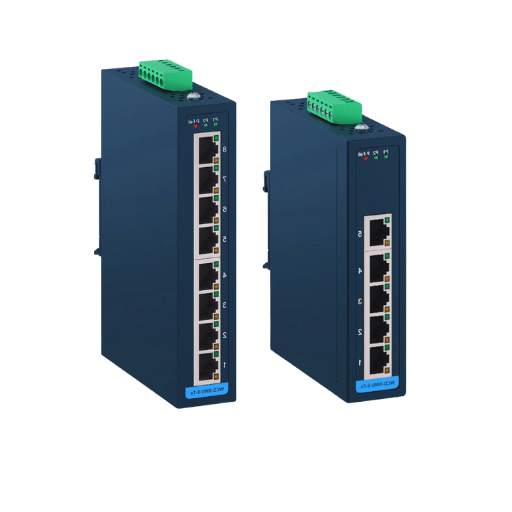
One can say there are certain advantages associated with the use of ‘industrial Ethernet switches’ over the more traditional Ethernet switches. Some of them include their suitability for extreme industrial environments and their availability as unmanaged industrial switches. They have good build quality, enabling them to function efficiently in extreme cold and hot temperatures, high and low vibrations, and high humidity and dust conditions for their consistent performance over some time. In addition, various advanced protocols and redundancy techniques are utilized to increase the network’s resilience, which allows automatic fail-over in the event of the failure of specific components, thus reducing possible downtimes. In addition, critical industrial operations are protected from malicious human activity by using security features that comprise the holy industrial networks. All these features cumulatively explain why industrial Ethernet switches are the best mitigating factor when there is a need to support average high-speed and steady network traffic in an industrial environment.
Various industries have different applications for Industrial Ethernet switches. Manufacturing and automatics allow real-time control and supervision of the machines and processes, enabling communication between the programmable logic controllers (PLCs) and other controlled equipment. In the energy sector, this switch allows for collecting and controlling information systems for power distribution networks, such as smart grids, making them more reliable and efficient. Loh in the transportation industry, industrial Ethernet switches are adopted to fortify rail systems and traffic management systems for advanced signaling and surveillance systems to enhance safety and efficiency. Their capacity to operate at high data volumes and provide optimal network stability is why these devices are relevant in these harsh industrial characteristics.
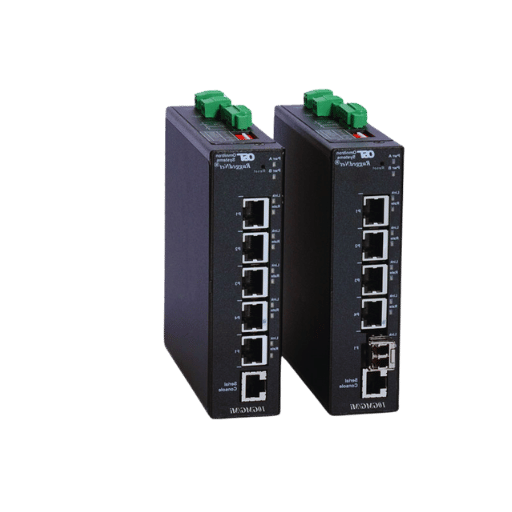
The decision of which Ethernet switch to choose rests on parameters such as the level of control needed and the complexity of the network. More advanced management capabilities such as VLAN, SNMP monitoring, and redundancy protocols suit managed switches to more complicated industrial applications where traffic management and network configuration are necessary and continuous. Enhanced control and monitoring information technologies provide advanced capability (network optimization) and assist in problem-fixing. On the other hand, simple unmanaged switches are easy to use, less expensive, and cater to less demanding application performance requirements within smaller coverage areas where only a basic connection is necessary. Networking cables are simply a means of outreach. They are typically set up in less than four hours and require very little adjusting at startup or maintenance after that; however, they do not represent the managed options’ security improvements and seamless integration into existing enterprise systems. If these factors are considered, the decision will most likely be the correct one and will influence the operational needs and the budget available for such a project.
Assessment of port requirements includes evaluation of present usage and prediction of growth. An eight-port switch may be adequate for small-scale networks with limited device connections. For larger networks that need enhanced connectivity and greater bandwidth, devices with 16, 24, or 48 ports can cater to these needs. The selection determination should also consider replication, redundancy, and scaling requirements likely to face the network’s lifecycle. In addition, performance optimization entails considering existing network architecture if necessary. These factors will assist in making a switch purchase that will handle the current need and still fall within the expansion envisioned shortly.
Power over Ethernet (PoE) is a method of transmitting data that includes transferring electrical power through the network cables to the active devices. This combination helps use devices like IP cameras, VoIP phones, and wireless access points because the devices can now get power and data over one cable, eliminating the use of separate electrical wires and sockets. Deploying PoE networks decreases the complexity of installation, reduces costs, and increases the mobility of network devices since they can be moved easily to any location within the existing infrastructure. It also handles pale liter risks and makes the growth of the network seamless with a bit of change in the physical nature. By eliminating the need for separate management of power and networking, computer networks become more scalable and efficient.
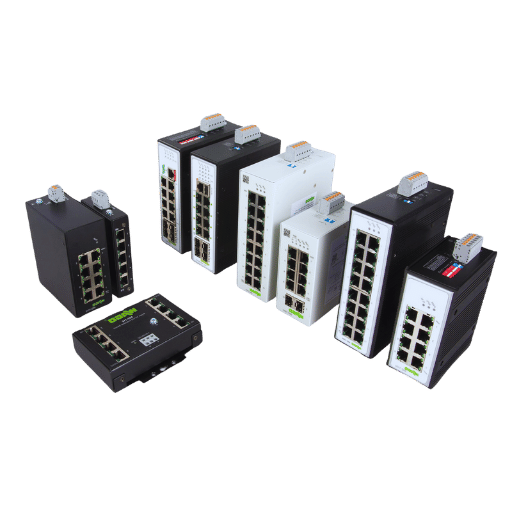
Managed Ethernet switches provide considerable advantages for industrial networks, especially regarding network management and performance. This is because these switches can manage traffic on the network more effectively, enabling the administrator to manipulate settings and route data according to the specific needs within the operational framework. More effective utilization is achieved, and latency is minimized, necessary within any industrial setting where information must be relayed in real time. The managed switches also support remote management and troubleshooting, enhancing efficiency and reducing the time required for repairs and other maintenance. Add-ons like Virtual Local Area Networks (VLANs), Quality of service (QoS) provision, and redundant exchange procedures have contributed in a significant way towards keeping the networks well managed. Hence, it is essential to manage Ethernet switches to control industrial networks efficiently.
Within the internal networks, designated Ethernet-managed switches add much to the security and have more features, such as VLAN, which keeps sensitive information and content safe from excessive access and significantly reduces attack surfaces. This segmentation, therefore, minimizes unauthorized access, and even if such intrusions occur, it limits the extent of damages caused by such intruders. Moreover, managed switches offer extended access control for limits on the number of connections to devices and specific authenticated users preferred for the connections. This makes it possible to implement effective authorization and identity verification restriction policies. Such elements do not allow for the intrusion of the network and limit access to only authorized users and devices. Lastly, managed switches also support various security defenses that help with security-related incident reviews and logging, monitoring, and response to any abnormal activities, thus improving the network’s security posture.
Layer 2 and 3 managed switches differ regarding their functions and operational capabilities. Layer 2 switches operate within a single collision domain and thus only switch packets with MAC addresses. They are suitable for compact or less sophisticated networks performing data link layer functions in a network. Conversely, Layer 3 switches operate as multilayer switches which perform routing using the IP addresses of the packets with routing capabilities—the ability to perform inter-networking routing aids in the scalability and flexibility of the network. In addition to this, Layer 3 switches are supportive of more advanced routing protocols and security measures. As such, the decision of which switch to use, whether Layer 2 or Layer 3, is influenced by network size, complexity, and the industrial environment’s routing and security requirements.
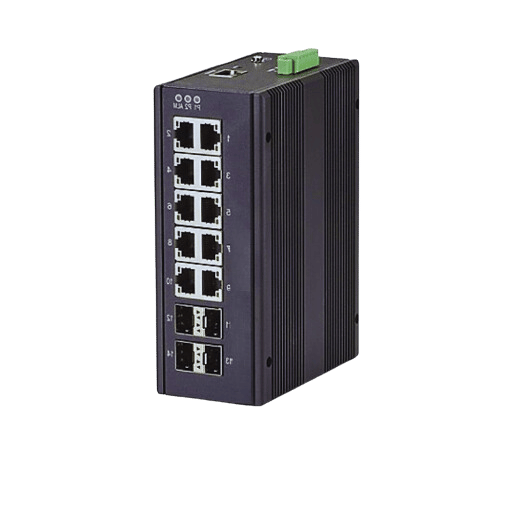
Ruggedized Industrial Ethernet Switches, including DIN rail solutions, are built tough for dependable connectivity in demanding environments. Such switches are encased in materials that can withstand wide temperature ranges, shocks, and EMI. Furthermore, they usually have tough enclosures for dust, moisture, and chemical protection. To this end, these switches have redundant power inputs and network connections further to minimize the effects of power outages and network failure. Also included is built-in fast network troubleshooting for industrial usage, which ensures that any connectivity issues do not leave users in uncertainty for too long.
Since strenuous conditions define industrial Ethernet switches, it is important to consider temperature operational ranges when designing the network. These switches normally must be designed so that they operate within a large range of temperature averages, which is usually between negative forty degrees Celsius to seventy-five degrees Celsius or even higher. Such a wide degree of temperature acceptance is required so that all devices will work at a high level regardless of the changes in the surroundings. However, in factories where there is high thermal variation, external equipment is also expected to perform both in high ambient temperatures and low temperatures. Further, employing the switches with proper design temperature limitations helps protect the integrity of the physical network equipment and reduces repair and maintenance costs. When it comes to network switches, manufacturers usually offer them in particular temperature ranges, it’s evident that these pauses in places were caused with more trouble than pre planned, reaching more than 250 Ees further also brings more delays than planned.
Networks should be designed with redundancy as one of their fundamental components to enhance reliability. This is particularly true in systems where several strides are made in the use of industrial Ethernet switches since there is always a possibility of a component failure where some components are working but one or more are out. The current state of the art suggests that employing redundant network paths in either ring or mesh topologies allows data to be directed around the point of failure so connectivity is not compromised. Another level of complexities and concerns is built in such that there are useable backup and dual power supply systems to protect against any loss of power. Network management protocols such as Rapid Spanning Tree Protocol (RSTP) and Ethernet Ring Protection Switching (ERPS) are also advanced to reduce the recovery time in case of a network fault taking place so that there is little disruption in order. Systems apply abundant networks like the above protocols and techniques, which promise more reliability as it increases production activities and eliminates operation downtimes.
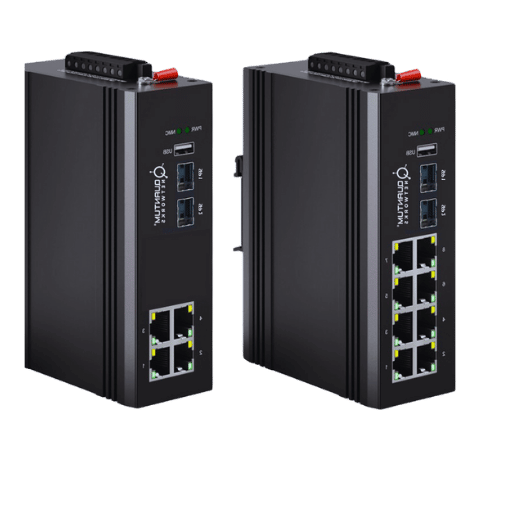
The implementation of networking solutions in critical infrastructure environments is a task that involves great care and preparation. Firstly, it calls for a thorough risk management task to ascertain particular weaknesses and risks. Security implements, including firewalls and intrusion detection, must be implemented to protect from unauthorized access. Make it a priority to deploy redundancy hardware and software and the operation of supporting failover components. Firmware and general software updates are believed to lessen newer threats of hunger that were not present in previous software versions. Thereafter, an effective maintenance plan with routine checks and repairs should be developed so that the operation of all equipment and systems, including industrial unmanaged switches, is within acceptable limits and optimal. These practices improve the security and dependability of deploying an entire network in critical infrastructure situations.
All these measures are important in enhancing the lifespan and effectiveness of a networking infrastructure.

A: An Industrial Ethernet Switch is a network switch that can function effectively under harsh working conditions. It can work even in extreme conditions, including high temperatures, vibrations, and interference. The efficiency of these switches allows for effective data communication in high-level work environments.
A: Industrial Ethernet Switches are beneficial in automation as they are safe and ensure continuous and effective network connectivity. The switches can be used with any of the available protocols, are very fast, and sometimes have extra functionalities such as QoS to ensure that the most important data is not lost during data transmission, hence making the systems in automation function effectively.
A: Managed Ethernet switches make features like VLANs, QoS, Network Monitoring, and all other features that give the administrator control over the Network feasible. Unmanaged Ethernet switches are easy to operate as they are plug-and-play devices that do not require any configuration, making them appropriate for small-scale networks with little complexity.
A: A PoE switch enables the user to send power and data through an Ethernet cable, eliminating the need for separate cables. This is useful in cases that call for more power supply to remote or hard-to-access devices, such as industrial installations.
A: An SFP port is one of the ‘microminiature electrical’ interfaces that can accommodate modules that support relative connection to different network cables, such as fiber optic or copper connectors developed by the IEEE. This is very important in industrial settings since the network landscape may evolve.
A: Critical factors are support for Gigabit Ethernet, rugged design, wide operating temperature range (-40°C to 75°C), access redundancy features, and support for SFP and RJ45 connectors for more connection options.
A: A modular design offers a switch that can be easily expanded or tailored for particular industry use. It allows for including or substituting ports or other inclusive components without necessarily shutting down the entire system.
A: Industrial rackmount switches, such as DIN rail mountable switches and standard rack-mountable switches, are designed to withstand the conditions of an industrial setting and fit into standard 19-inch racking systems. They also possess high port density and robust yet industrial-oriented features such as extended operational temperatures and additional power supplies.
A: These devices generally have an extended operating temperature range of -40°C to 75 °C, so they can function seamlessly even in harsh conditions. This function is necessary in many installations where networks and other equipment must operate in various industrial conditions.
A: QoS (Quality of Service) provides an additional measure in all industrial Ethernet switches. It manages the flow of traffic to enable swift transmission of important data like control signals in automation systems. In other words, this only relieves the burden from the industry’s inefficient and unreliable processes.